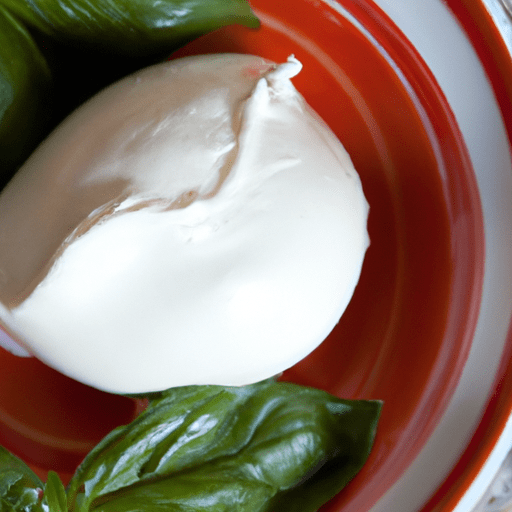Fresh Mozzarella Cheese: A Milky Delight
If you have ever indulged in a Caprese salad or savored a slice of Margherita pizza, chances are you have encountered the creamy and delectable delight that is fresh mozzarella cheese. With its soft texture, delicate flavor, and versatility in the kitchen, this cheese has become a staple in many cuisines worldwide. In this blog post, we will dive into the tantalizing world of fresh mozzarella, exploring its taste profile, culinary uses, nutritional value, and fascinating history.
Taste Profile
Fresh mozzarella cheese is renowned for its mild and milky flavor. It boasts a subtle tanginess that adds a delightful counterpoint to its creamy richness. The cheese possesses a slightly elastic texture, which, when combined with its softness, creates a luxurious mouthfeel. Unlike aged mozzarella, its fresher counterpart lacks the distinctive “pull” and chewiness, instead presenting a melt-in-your-mouth experience.
Culinary Uses
Fresh mozzarella is a culinary muse, inspiring creative dishes and elevating classics. Its versatility makes it a cherished cheese among chefs and home cooks alike. Here are some common ways fresh mozzarella can star in your meals:
Caprese Salad: A harmonious blend of fresh mozzarella, ripe tomatoes, fragrant basil, and a drizzle of extra-virgin olive oil, this Italian classic is a celebration of simplicity and freshness.
Margherita Pizza: The cornerstone of Neapolitan pizza, the Margherita, features juicy tomato sauce, aromatic basil leaves, and generous slices of fresh mozzarella. When baked to perfection, it yields a symphony of flavors.
Stuffed and Fried: Fresh mozzarella embraces versatility. It can be stuffed into chicken breasts, breaded, and fried until golden and oozing. This delightful indulgence promises an explosion of cheesy goodness in every bite.
Antipasto Platter: A delightful addition to any charcuterie board, fresh mozzarella adds a creamy element alongside cured meats, olives, marinated vegetables, and crusty bread.
Nutritional Value
Besides its enchanting taste, fresh mozzarella also offers nutritional benefits. Here is a snapshot of its nutritional value per 100 grams:
- Calories: 280
- Protein: 22 grams
- Fat: 22 grams
- Carbohydrates: 4 grams
- Calcium: 400 milligrams
- Vitamin B12: 0.7 micrograms
While fresh mozzarella is a calorie-dense food due to its fat content, it also delivers a generous amount of high-quality protein. Additionally, it is a source of calcium, which is essential for maintaining strong bones and teeth.
History and Facts
Fresh mozzarella cheese traces its origins back to Italy, specifically the Campania region, where it was created in the 12th century. Traditionally made from buffalo milk, fresh mozzarella was a specialty of Italian cheesemakers. Over time, it gained international popularity and is now made from various types of milk, including cow, goat, and sheep.
It’s worth noting that authentic Mozzarella di Bufala Campana DOP is protected by European Union law, ensuring strict adherence to traditional production methods and the exclusive use of buffalo milk from designated regions in Italy.
Did you know that fresh mozzarella has different names depending on its shape? Ciliegine refers to small cherry-sized balls, while bocconcini refers to slightly larger bite-sized pieces. Additionally, the classic elongated shape is known as treccia or braided mozzarella.
In Summary
Fresh mozzarella cheese enchants our palates with its milky flavor, delicate texture, and versatility in the kitchen. Whether starring in a Caprese salad, adding creaminess to a pizza, or elevating a humble antipasto platter, this cheese has rightfully earned its place in culinary history. So, embrace the creaminess and savor the indulgence of fresh mozzarella, a true delight for food lovers around the world!
Fresh Mozzarella Cheese:
Origin: Fresh mozzarella cheese, also known as mozzarella di bufala, originated in Italy. It is believed to have been first made in the Campania region, particularly in the area surrounding Naples.
Common Uses: Fresh mozzarella cheese is commonly used in a variety of dishes, both cooked and raw. It is a popular ingredient in Caprese salad, where it is combined with tomatoes and basil. It is also commonly used in pizza, lasagna, pasta dishes, and sandwiches.
Nutritional Benefits: Fresh mozzarella cheese is a good source of various essential nutrients. It provides high-quality protein, calcium, phosphorus, and vitamin B12. It also contains some amounts of other vitamins and minerals.
Unique Properties: Fresh mozzarella cheese has a unique soft and stretchy texture. Its taste is mild and slightly tangy. It has a high moisture content, which gives it a soft and moist consistency.
Historical Significance: The production of fresh mozzarella cheese has a long history in Italy. Traditional methods of making mozzarella involve using the milk from water buffaloes or cow’s milk. The cheese has been made by hand for centuries, often by skilled artisans following traditional techniques.
Variations: Fresh mozzarella cheese comes in different forms, such as balls, logs, and ovolini (egg-shaped). The milk used, whether from water buffaloes or cows, can influence the flavor and texture of the cheese.
Storage and Shelf Life: Fresh mozzarella cheese is best enjoyed shortly after it is made. It is highly perishable and should be stored in its liquid, typically brine or whey, in the refrigerator. Its shelf life is relatively short compared to aged cheeses.
Cultivation beyond Italy: Fresh mozzarella cheese is also produced in other countries, including the United States. Although the flavor and texture may vary slightly from the traditional Italian version, the basic process of making fresh mozzarella remains the same.




Use the share button below if you liked it.
It makes me smile, when I see it.